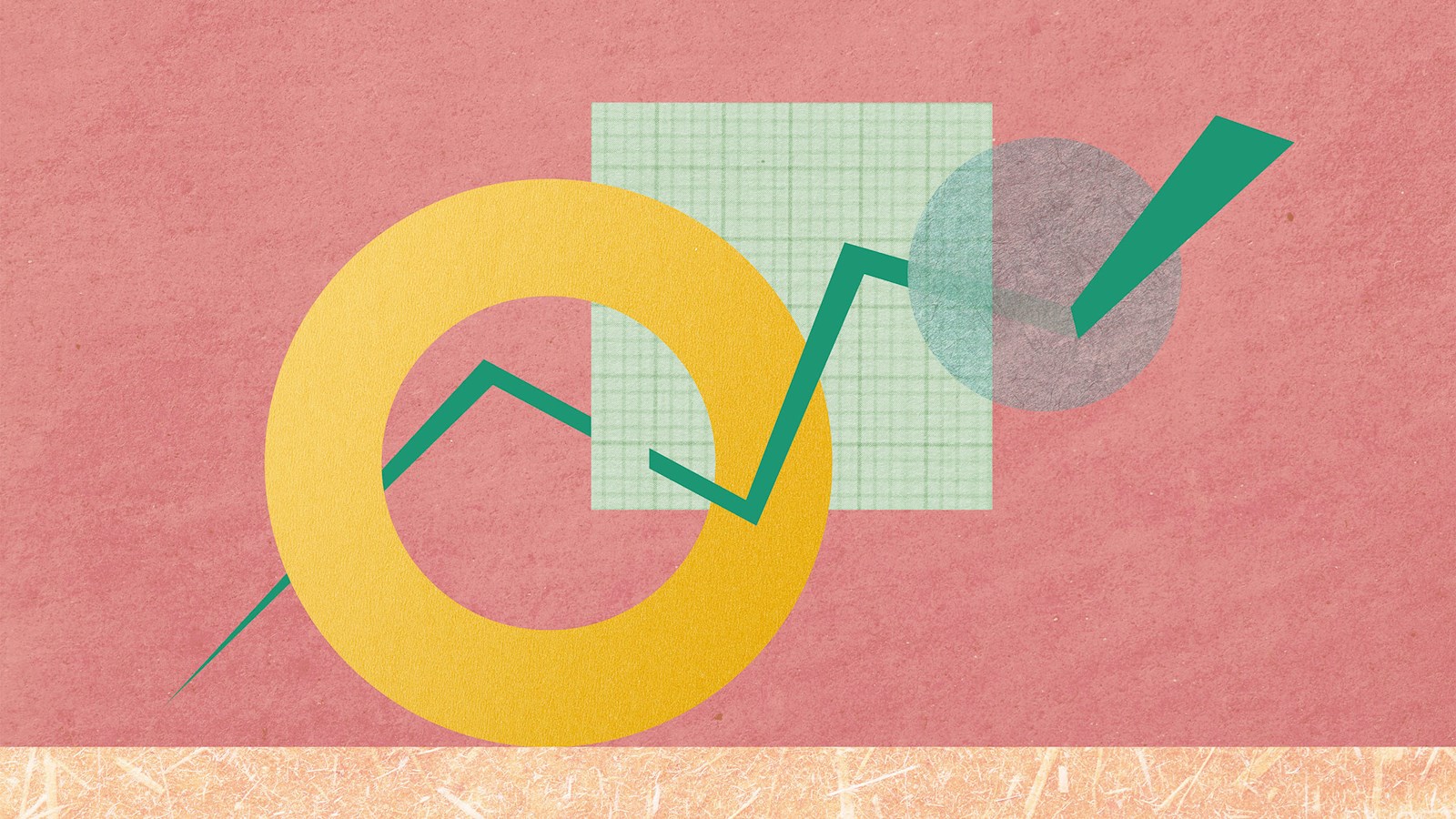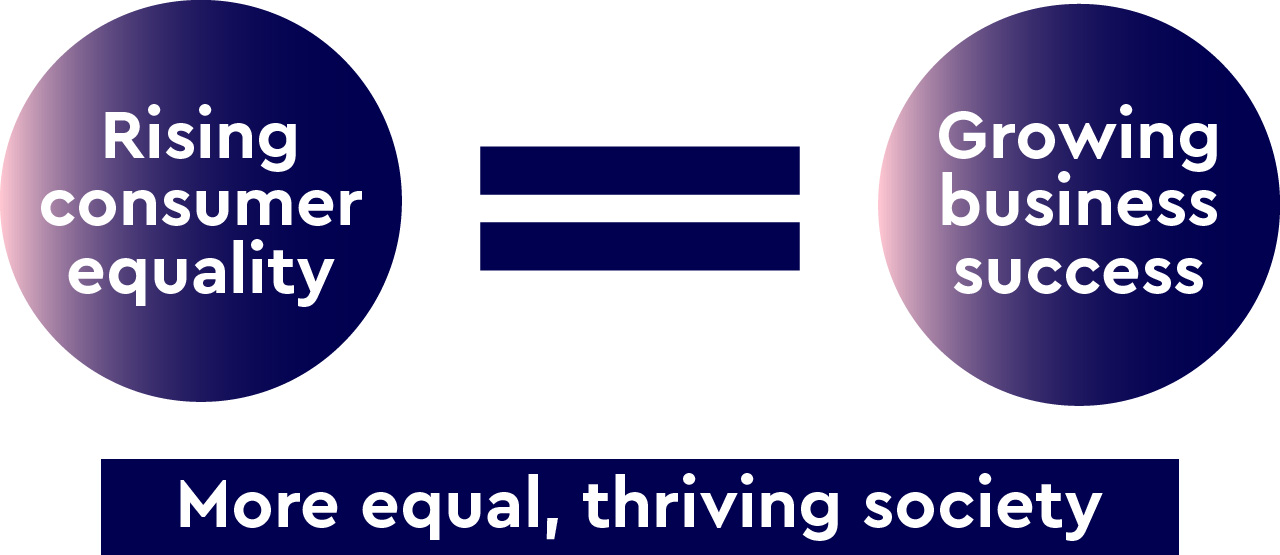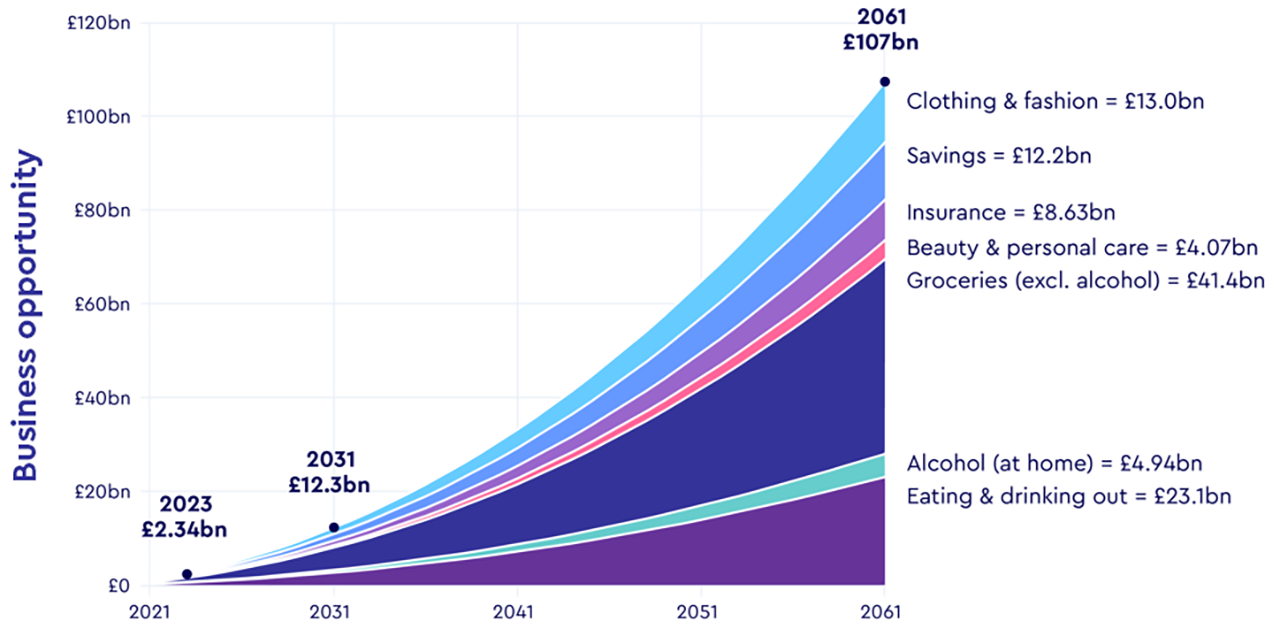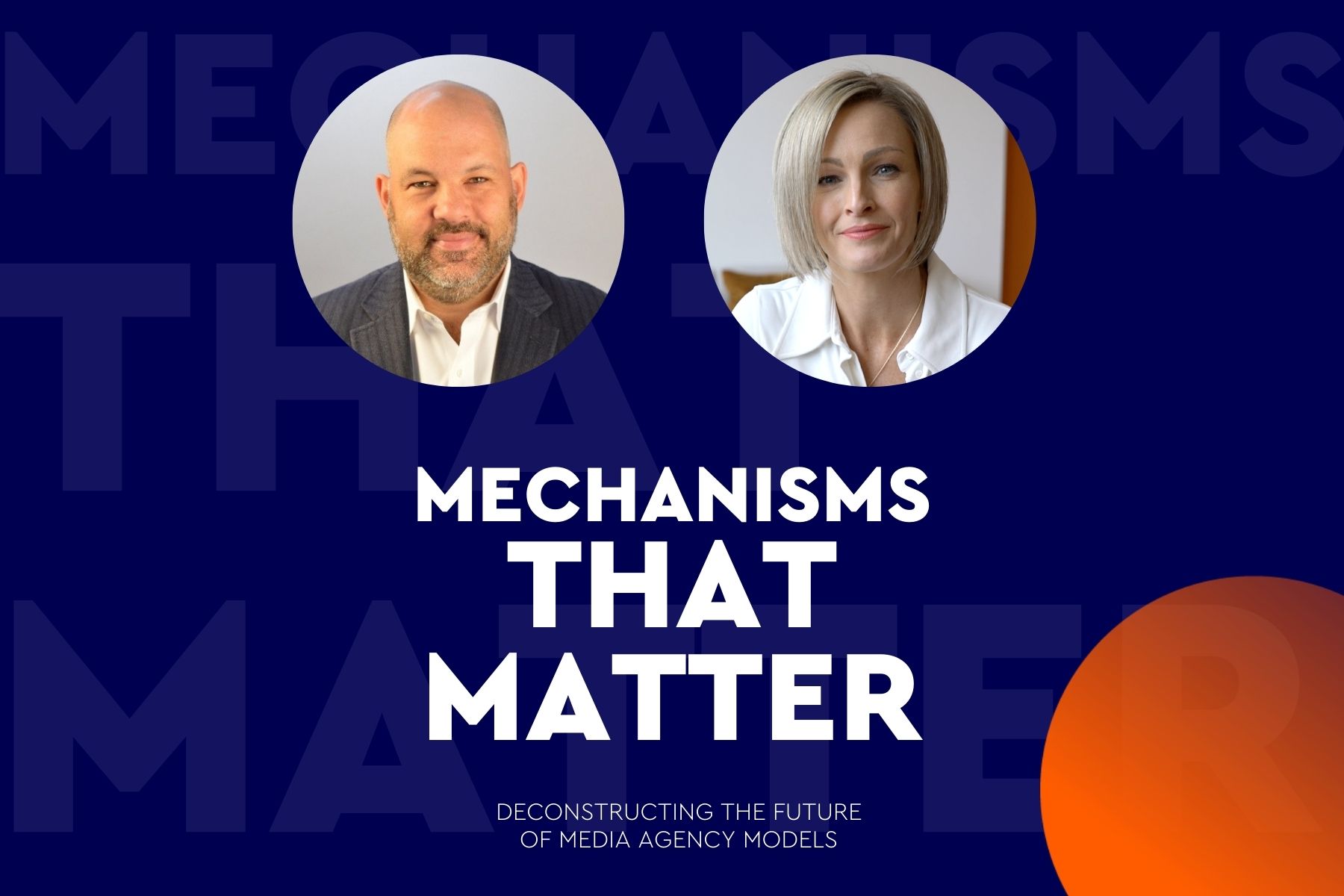
Consumer equality: drive business growth to tackle racial inequality
When it comes to businesses tackling racial inequality, ‘doing the right thing’ as a means of brand growth is back to front, argues Ogilvy Consulting’s Shelina Janmohamed
If brands really want to make an impact, they should focus their efforts on consumer experience to drive business growth, and that’s where they will have the social biggest impact. Forget the Black Squares of Instagram, here’s how to really make a difference.
You’ve heard of financial inequality, health inequality, social inequality – now it’s time for a new metric for business growth: consumer equality. This is an inequality that lies at the intersection of consumer experience (what brands/corporations do) and the social context (the systemic and societal problems of inequality and racism).
After the murder of George Floyd and the rising anti-racism movement, the ‘Black Squares of Instagram’ campaign was a symbol of the good intent of brands to make change, but what impact did it actually have? The need was for businesses to think hard about the area where they can truly make a difference: consumer experience.
But in 2020 in the UK, there was scant information about that simple but most obvious question: “What does it mean to be a Minority Ethnic consumer?”
Fast forward two years of depth research – including 100+ experts, 8,300+ respondents, 36 depth interviews, 22 expert interrogations, a depth brand study (BAV) and the creation of original population, category spend and disposable income modelling tools (Choreograph) – and the output is the UK’s most comprehensive study into ethnicity and consumer experience.
The headlines? Consumers of all ethnicities say that ethnicity matters and brands need to be in this conversation. Brands and advertising shape and direct our cultural life and consumers expect them to step up. In fact, 82% of respondents say that brands play an important role in shaping Britain’s culture and 80% agree that brands nowadays have a responsibility to reflect modern Britain.
Consumer experience is not trivial, it shapes every part of a person’s life, and inequalities in consumer experience add up at each touchpoint and multiply over a generation. Please see The Consumer Equality Equation Report, page 26.
These are cumulative losses for the consumer, and they are a component of racial inequality. If brands are serious about playing their part, then they need to focus on what they are set up to do: deliver consumer value exchange. And by doing so, they will generate business growth, and its byproduct will be greater racial equality in society.
The ‘consumer equality equation’
The more equal the experiences a business delivers to its (Minority Ethnic) consumers, the greater the business growth. The byproduct is a more equal thriving society.

In the UK Minority Ethnic groups make up 14.6% of the population, which is set to grow to 27% by 2061. And delivering consumer equality means business growth opportunity: £727bn in 2024 alone, and £16.7tr cumulatively by 2061.
In the same way that businesses that were at the forefront of diversity initiatives to change businesses internally are reaping the rewards of innovation and productivity, adopting the Consumer Equality framework will catapult businesses in their engagement with Minority Ethnic groups and accelerate business growth.
The paradox of ethnicity
Ethnicity matters: 91% of people from Minority Ethnic groups said it is important to their sense of who they are. But it’s not the only thing that matters, identity is complex, nuanced and multifaceted, and that’s what they expect from brands. These include aspects like regionality, community and religious heritage.
Brands are unfortunately paralysed by a paradox of their own: they rightly want to do something, but the paradox is that they are doing it in places where they don’t have the power to make lasting change, instead of in the consumer space which is exactly where they can reduce inequality.
And this is compounded by the paradox that brands do want to have lasting impact (because this is vital for business success) but actions are one-off moments and campaigns.
Consumer inequality in a business
So how does consumer inequality show up in your business, and what can you do about it?
Data inequality is a form of racism
Start by ensuring data and business tools include Minority Ethnic groups. Remember to ask ‘what is the norm’ being used? Businesses are too often set to operate at the ‘norm’ using White as the baseline. That is, after all, what society does too. But put on your ‘consumer equality glasses’ and you see the gaps.
Please see The Consumer Equality Equation Report, page 13.
Attention inequality
According to a recent study by Mintel, Gen Z makes up 15% of the UK population. This consumer group is writ large all over trade headlines. But Minority Ethnic groups make up an approximately similar 14.6% of the UK population – but this is set to grow to 27% by 2061. The attention inequality to this consumer group is stark.
What does it feel like?
It should be second nature to businesses and marketeers to stand in the shoes of their consumers, but people leave their understanding of the world at the door and too often stereotypes dominate and lazy caricatures are made.
Please see The Consumer Equality Equation Report, page 25.
Don’t make assumptions
Sadly, there are stereotypes and brands are missing out, and consumers are being typecast. In the study we found for example that more than five in six people from Minority Ethnic groups purchase luxury products compared to less than four in six of White consumers.
Expect the unexpected
Inequality doesn’t just mean worse or negative. It also means not knowing or understanding your consumer and have preconceived expectations. As an example, one of the most unexpected findings was around financial investment. 28% of people from Minority Ethnic groups aged 18-54 said they were investing for wealth compared to 17% of the same age group of White people.
Check that the ‘reasons’ aren’t actually excuses
The journey to establishing consumer equality as a business paradigm is filled with hidden justifications that have plausible deniability.
It has to be across the business
It's this multidisciplinary approach that yields nuance and complexity as well as tools that can be powerfully applied across all aspects of a business. The consulting and consumer aspects (from Ogilvy Consulting) respond to questions of attitudes, behaviours and insights. The BAV brand component reveals never before available perspectives on how brands are perceived by these groups and what brands can do to grow. And the data modelling tools from Choreograph deliver that crucial component of business planning – the size, scale and key target groups for growth. GroupM perspectives shone a light on what this means for media planning.
The 1% shift
Minority Ethnic groups have been treated with consumer inequality by businesses. This is the greatest of all inequalities: the inequality of imagination that Minority Ethnic audiences should have the same insight, care and attention applied to them as any other consumer group.
It’s time to re-imagine engagement and to scope out an alternative future.
What is the commercial opportunity if your business could create a shift of just 1%?

The work and tools for consumer equality give brands the power to create an alternative future. And that future can come from the smallest shift: 1%. Just look at how quickly and widespread applying just 1% shift of consumer equality can yield.
Two sides of the same coin
Consumer equality is a win-win: grow your business and as an output, tackle racial inequality. What’s not to like? But if your business is nervous about being stuck between accusations of ‘woke-ism’ and ‘tokenism’ don’t be.
Both are criticisms of the superficiality of brands delivering performative equality and having misplaced hubris at the breadth of their impact. The answer is instead to focus on where brands can make an actual difference, and to therefore apply a ‘consumer equality’ framework.
The call to courage
But it takes courage for a business to lead change in the face of received wisdom and public approbation. Brands won’t be surprised to hear that courage brings rewards. But the scale of those rewards might be eye opening. Courage was the attribute in the data that showed the greatest resonance with Minority Ethnic groups, and also drove success in the eyes of all ethnicities.
Because if you’ve read this far, there’s just one final point to land. Applying consumer equality to people from Minority Ethnic groups makes life better not just for them, but for everyone. Because it delivers overall better consumer experiences, leads businesses to be more successful and innovative, and improves society and the economy overall.
A 1% shift can take the alternative future from your imagination and turn it into reality. All you need to do is put on your consumer equality glasses.
Please see The Consumer Equality Equation Report, page 24.
The full ‘Consumer Equality Equation Report’ is available to download for free, as part of our pledge to act as a catalyst to drive consumer equality.
Choreograph’s Melda Tozluoglu and BAV’s John Keaveney contributed to this article.
The Consumer Equality Equation report was produced by Ogilvy Consulting, GroupM, Choreograph, WPP BAV, WPP Roots and the Racial Equity Programme.
published on
30 November 2023
Category
More in Communications

Rebranding cancer: how brands heal and hurt
Along with consumer brands, the ‘brand’ of condition or event influences us.

Mechanisms that Matter – Inside WPP | Ford’s revolutionary marketing model
How a process created on the factory floor over 70 years ago has transformed ops for the auto giant

How to build your brand in-game
A new research report from WPP and SuperAwesome

